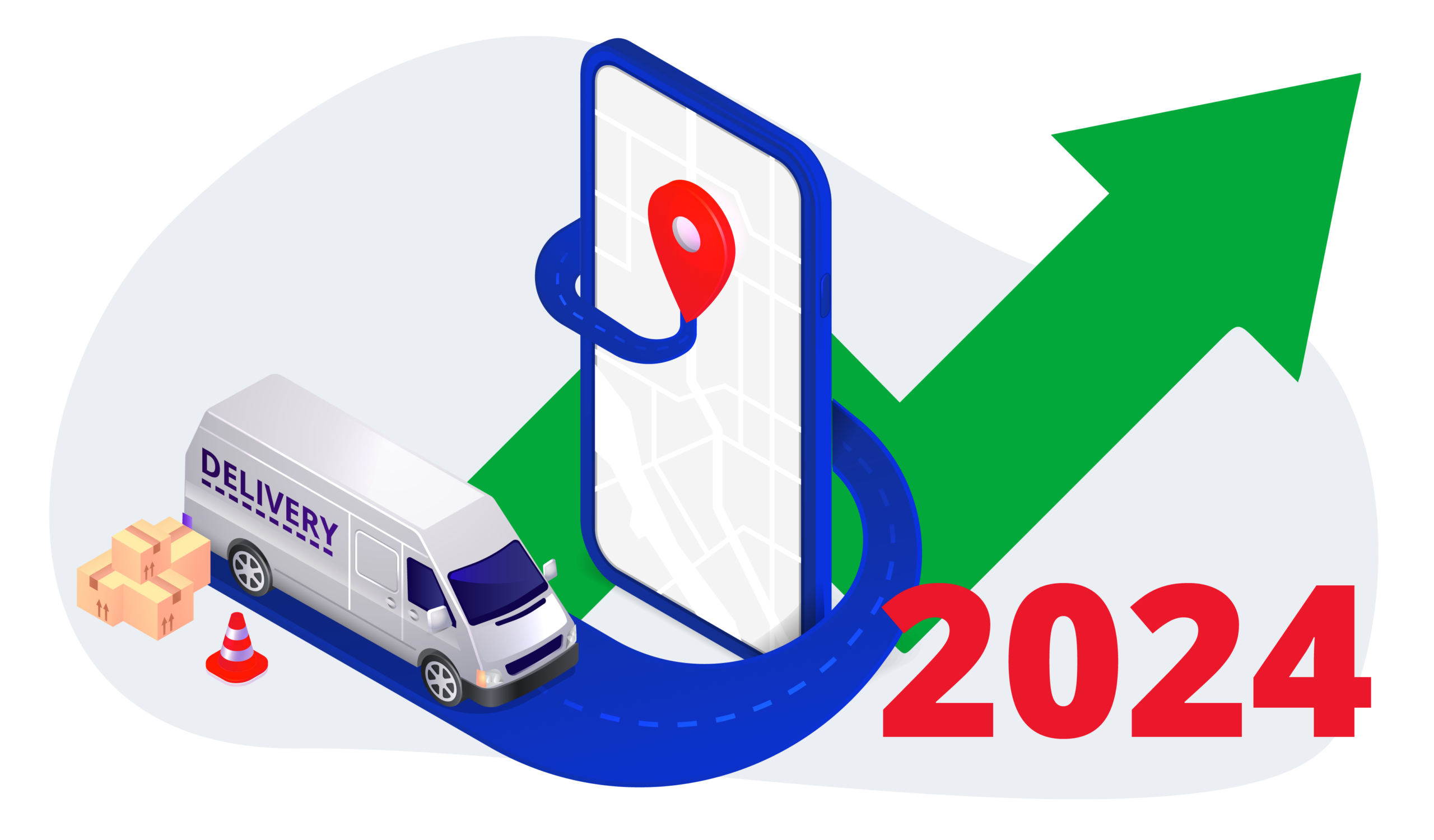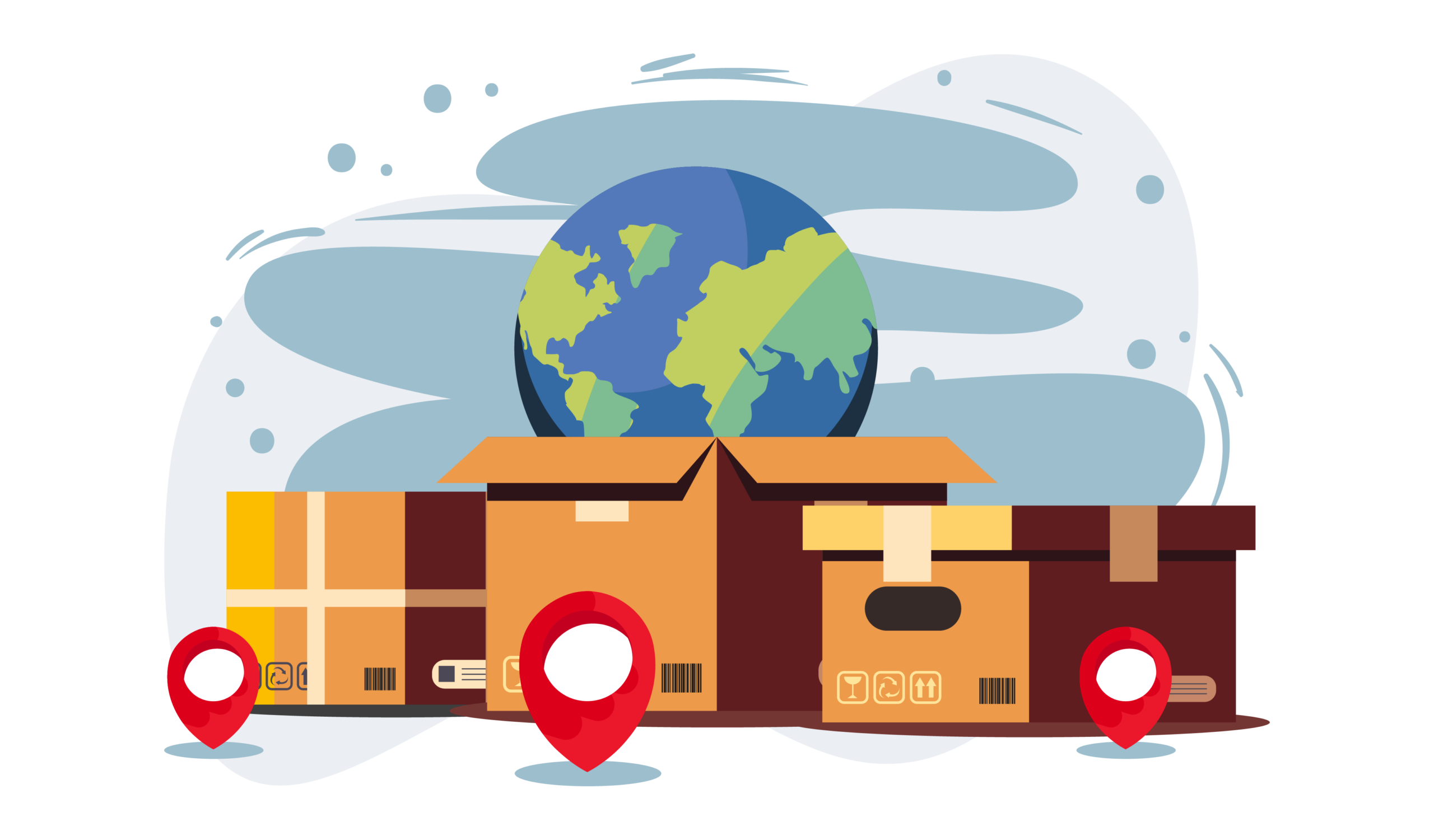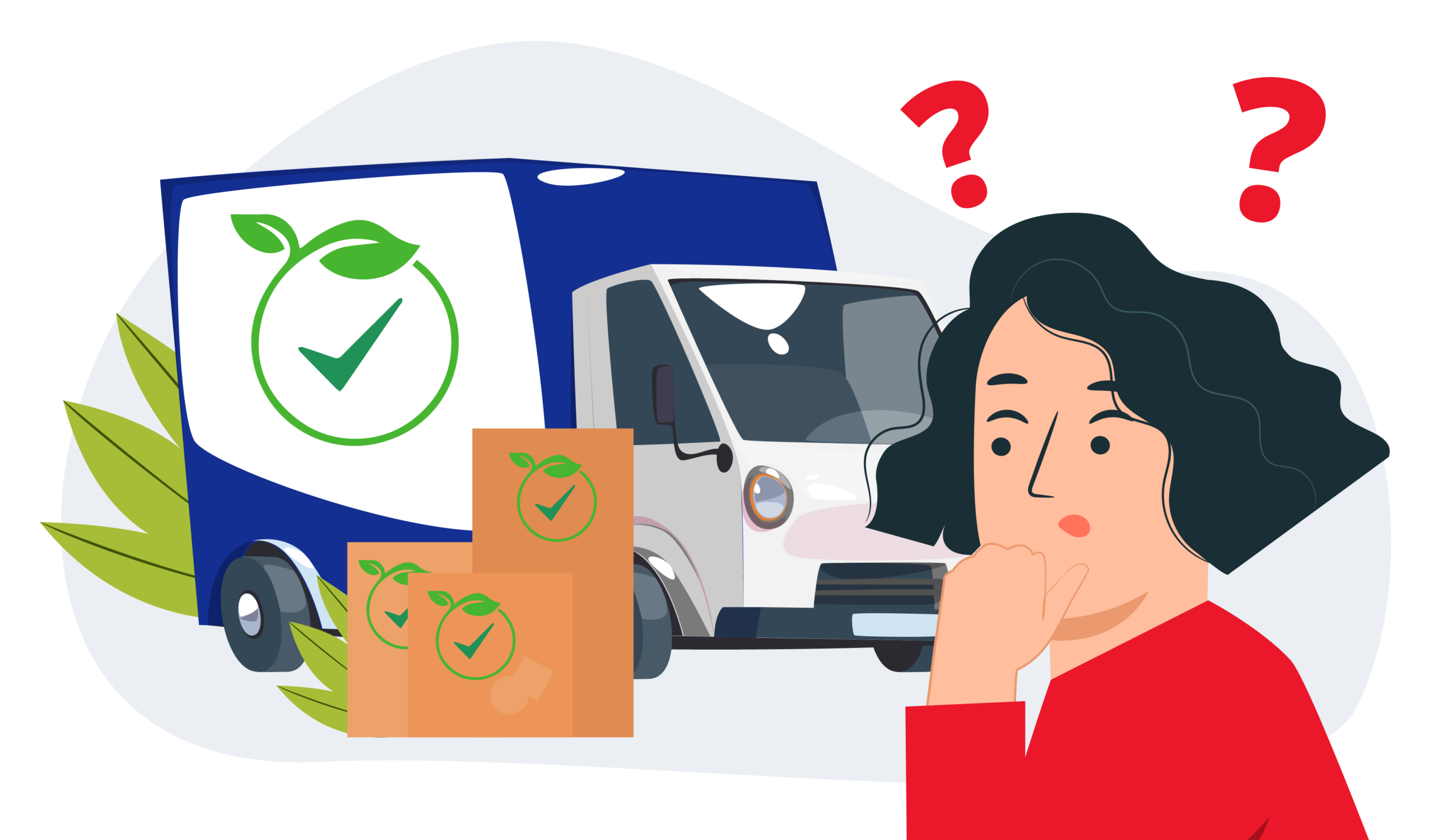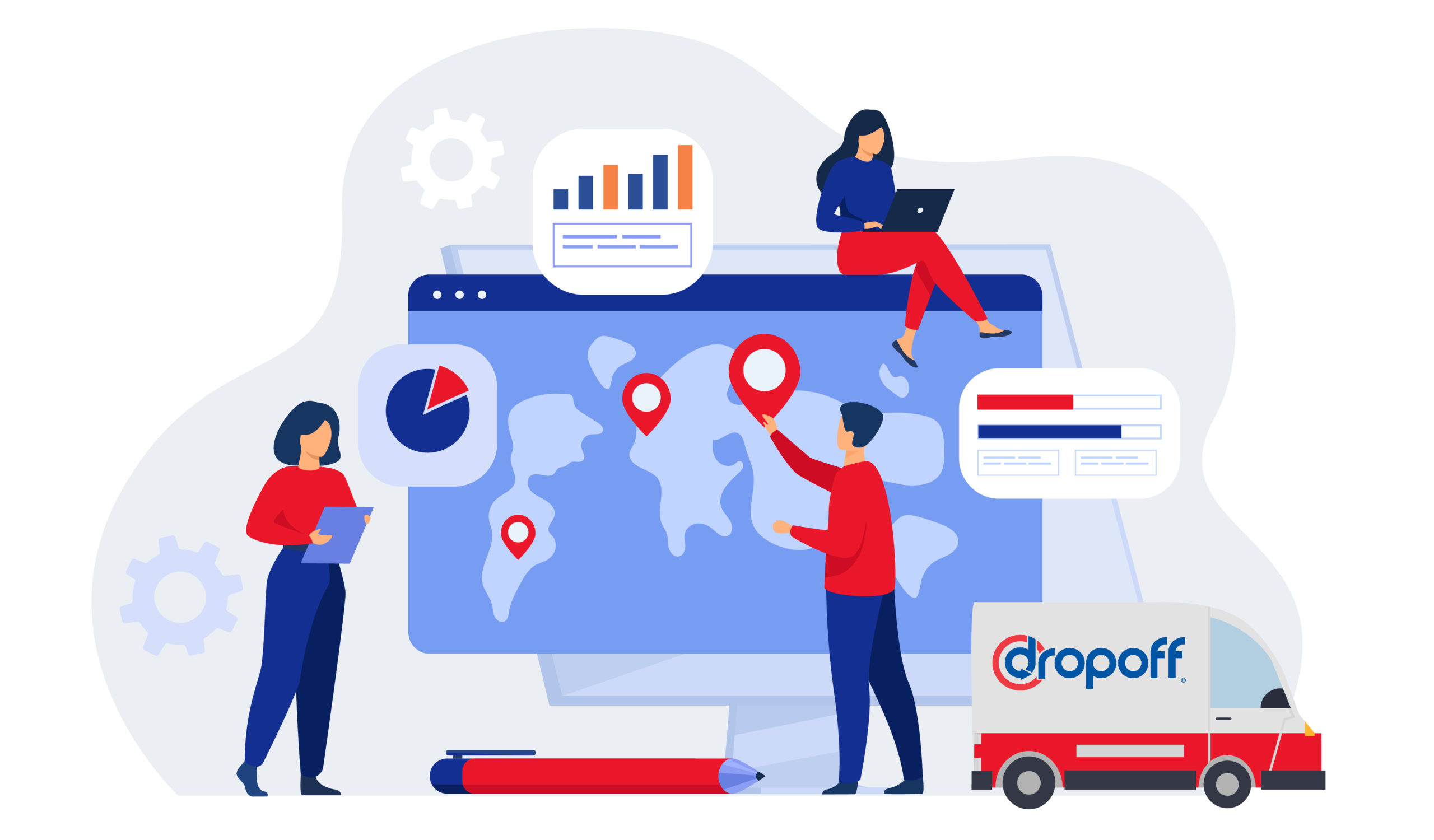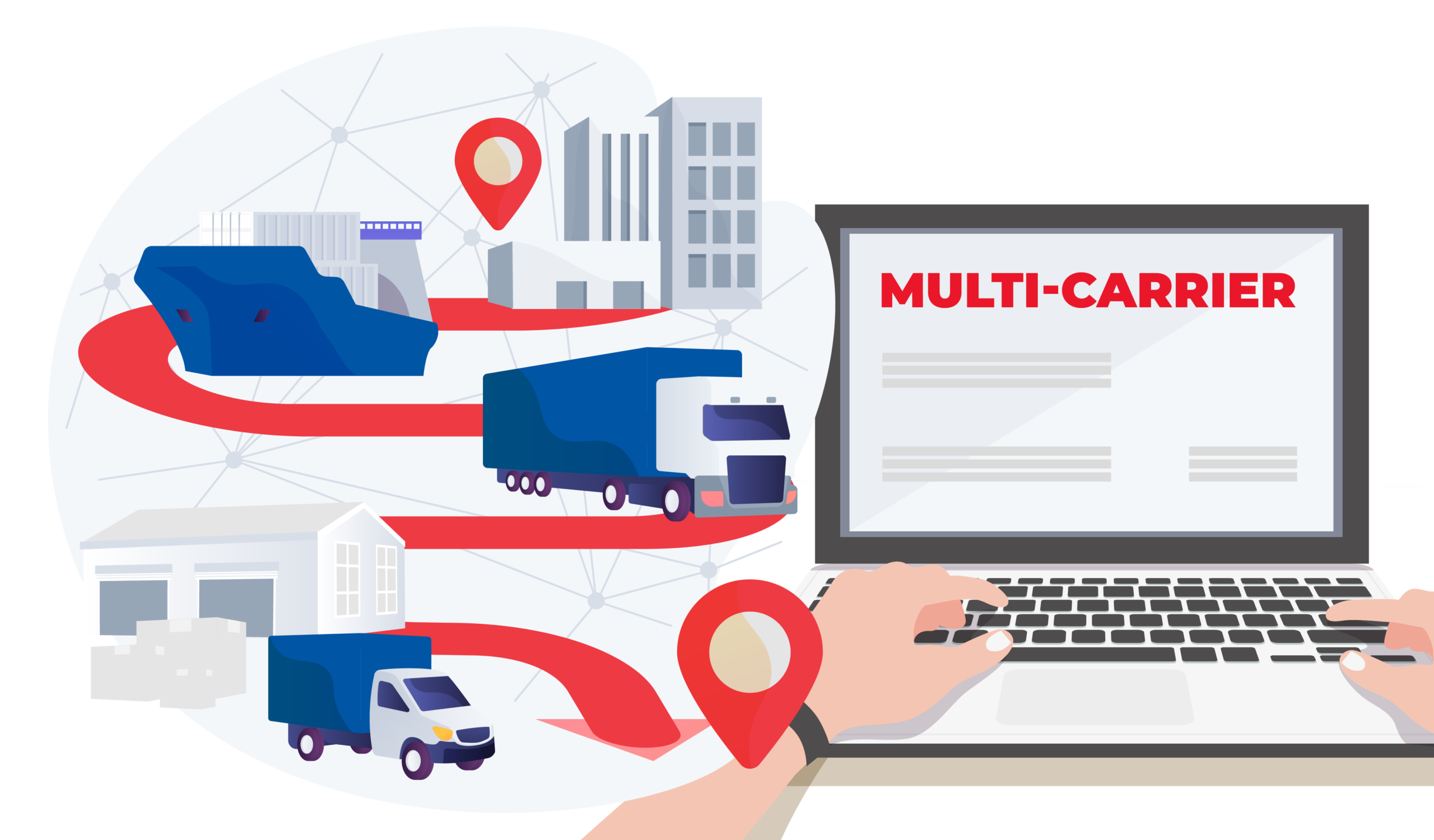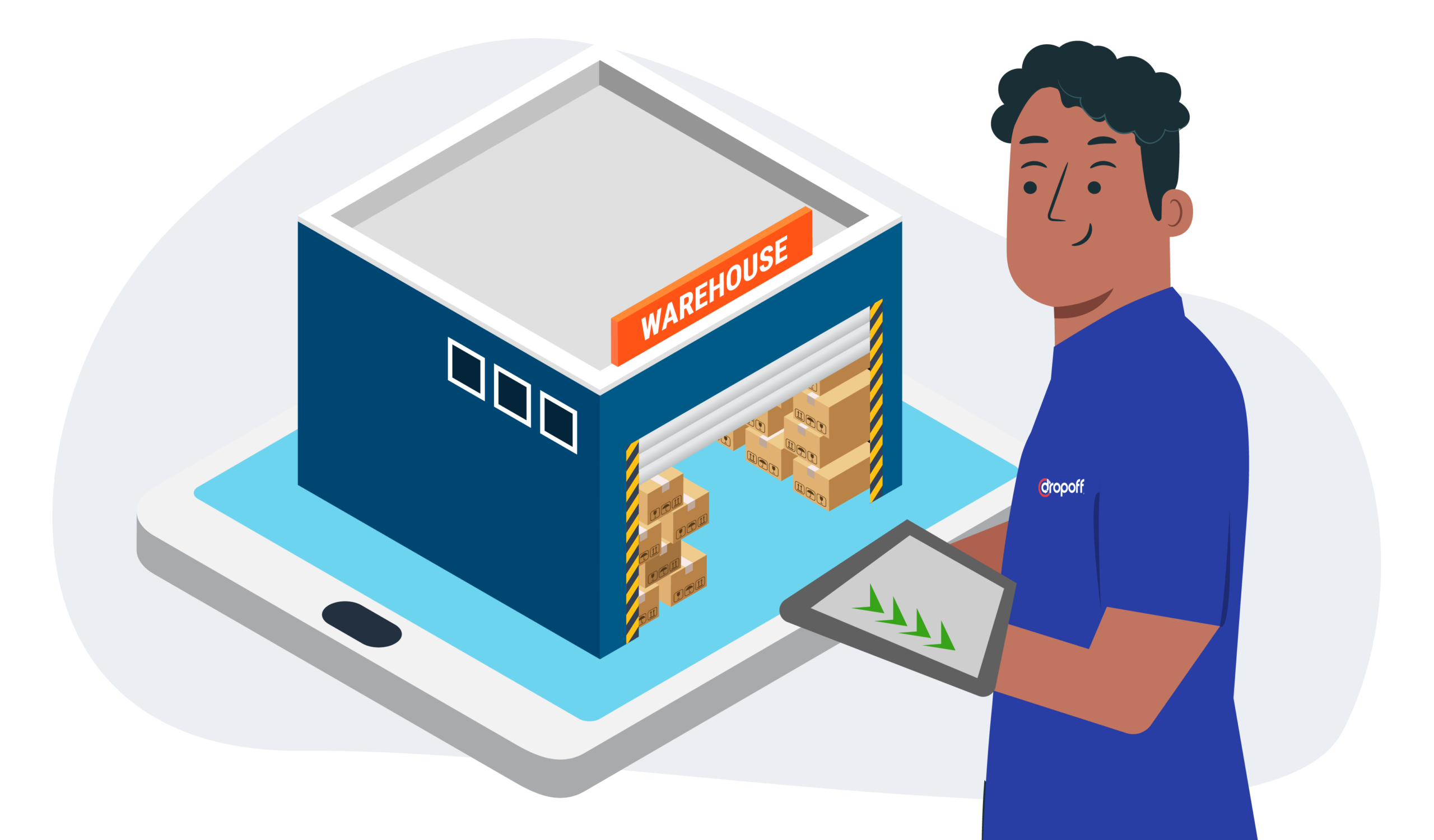Ultimate Guide to Middle-Mile Delivery in 2023
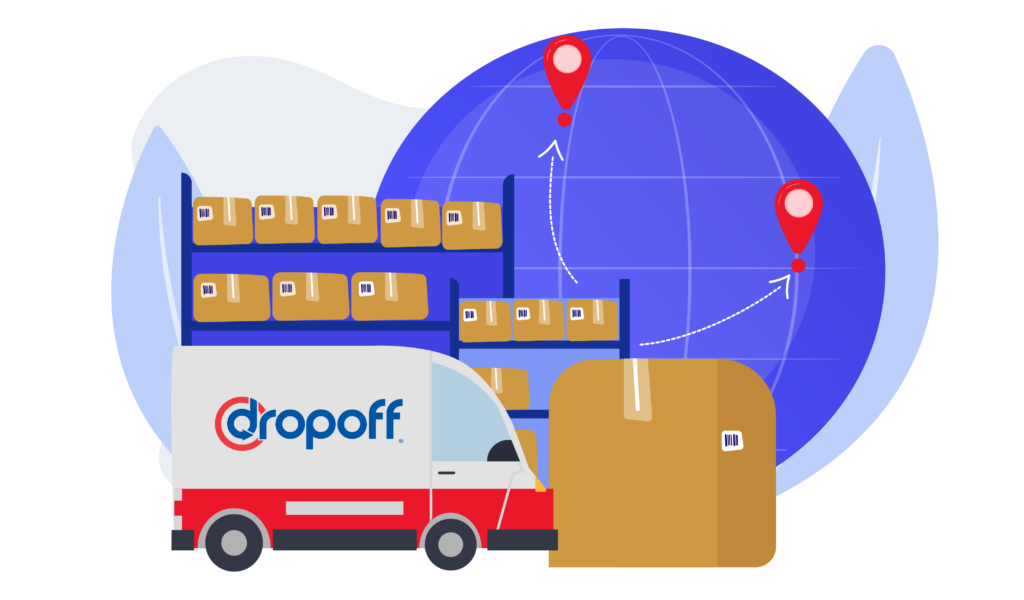
With online shopping skyrocketing in popularity, logistics services are more in demand than ever. The global third-party logistics (3PL) market is anticipated to reach $2.8 trillion by 2031, growing at a CAGR of 8.8% between 2022 and 2031, according to a report released by Allied Market Research.
Although this high demand offers businesses a number of business opportunities, it also raises a number of supply chain difficulties. For this reason, businesses must secure an efficient logistics process that isn’t just focused on last-mile delivery but limits bottlenecks during middle-mile delivery.
What is middle-mile delivery?
To fully comprehend the importance of middle-mile delivery, let’s first look at most businesses’ entire supply chain process today.
For ages, the retail industry has relied heavily on contract manufacturing to produce its goods. Essentially, they outsource to another company instead of making their merchandise in-house. With this strategy, businesses can concentrate on a number of crucial elements, such as marketing and sales techniques. Although this tactic has been employed for some time, it has now evolved into a number of different methods, including dropshipping and forming alliances with distributors.
This business trend created the demand for a three-point delivery system: first-mile, middle-mile, and last-mile deliveries.
The first mile covers the initial leg of product movement, where goods are transferred from a manufacturer’s or retailer’s warehouse to a designated holding center. From this phase, carriers, shipping companies, or logistics partners retrieve the goods, jump-starting the subsequent phase of the journey.
On the other hand, last-mile delivery covers transporting the product from the warehouse to the customer’s doorstep. Because it entails direct interaction with the customers, businesses often consider last-mile delivery the most vital part of the logistics process.
Middle mile vs. last mile delivery
Middle-mile delivery connects the first-mile and the last-mile delivery. It deals with transporting goods from ports to warehouses and fulfillment facilities, linking the first and last-mile deliveries of the product. While often overshadowed by other shipping phases, middle-mile delivery is a fundamental aspect of logistics operations, as it mostly moves products from one major location to another. Any delivery delay in the middle mile affects the last mile, which ultimately affects customer happiness. Thus, the first, middle, and last-mile delivery processes should always be in synergy.
What are the use cases of middle-mile logistics?
An efficient middle-mile delivery process can benefit numerous businesses, some enjoying more advantages than others. Here are some of the use cases of middle-mile logistics:
eCommerce
As mentioned a while ago, the rise of online shopping brought unprecedented demand to third-party logistics, including middle-mile deliveries. In 2022, the eCommerce industry reported staggering sales of $5.2 trillion, expected to grow to $8.1 in 2026. Undoubtedly, the technological revolution has increased customer comfort and acceptance with regard to making all kinds of online purchases, including those for necessities.
Dropshipping, in which a person or business sells things on their website without maintaining their own inventory, became more widely used as a result of this trend. Different companies manufacture, store, and deliver products, allowing them to focus on sales and marketing to make way for higher markups. An efficient middle-mile delivery ensures the swift movement of dropshipping products from manufacturers to regional distribution centers, facilitating quicker last-mile deliveries to online customers.
Retail Establishments
Since there is such a large market need, retail inventory management is crucial for businesses across industries.
By lowering the likelihood of supply shortages or surpluses, businesses utilize retail inventory management as a technique to guarantee they have adequate inventory to meet client needs. According to recent assessments, US retail businesses have an average inventory accuracy rate of 63%. While it’s still a relatively acceptable number, it’s impossible to ignore that over 37% of supplies are wasted because of inventory mismanagement–that’s billions of dollars of potential sales!
Retail chains can maximize their revenue generation through middle mile deliveries, as it enables shelf replenishment from centralized warehouses. Instead of connecting directly to manufacturers (which could be miles away from their stores), they could easily request additional products to be dispatched to their locations. This makes middle mile logistics a crucial sales sector and enables businesses to optimize inventory levels based on customer requests.
Manufacturing Businesses
Aside from dropshippers and retailers, middle mile delivery also affects manufacturers. For manufacturers who require raw materials or components, the delivery phase between suppliers and production facilities is essential. Continuous assembly lines are ensured by an efficient logistics system, which leads to a more effective and efficient production process.
Additionally, it’s critical to appreciate how manufacturers are affected by the growing need for sustainability. According to a recent PWC survey, 52% of business owners, mostly in the industrial manufacturing and consumer products industries, claimed that sustainability significantly impacted operations. Businesses are being forced by customers to utilize more sustainable and ecologically friendly materials, so they can no longer rely on the most easily accessible raw resources for their products. As a result, the supply chain system becomes more complicated and calls for efficient middle mile logistics.
Healthcare Sector
Most people might not realize that middle mile delivery goes beyond businesses–it also affects the healthcare system.
Once an order is placed from pharmaceutical companies, the products are shipped off to distribution centers. From here, they are transported to hospitals, clinics, and other distribution centers where customers and patients can purchase them–constituting the middle mile delivery.
The importance of middle mile transportation to the healthcare industry was put into the spotlight during the COVID-19 pandemic. Because of inventory management issues, millions of vaccines worldwide reached their expiration dates without being dispatched to distribution centers. Aside from this, some vaccines were contaminated, and eventually discarded, due to inefficient transportation procedures.
eCommerce, retail inventory management, manufacturing, and healthcare are some of the most notable use cases for middle mile delivery. Because of its integral role in the supply chain, it’s safe to say that middle mile logistics affect businesses across industries.
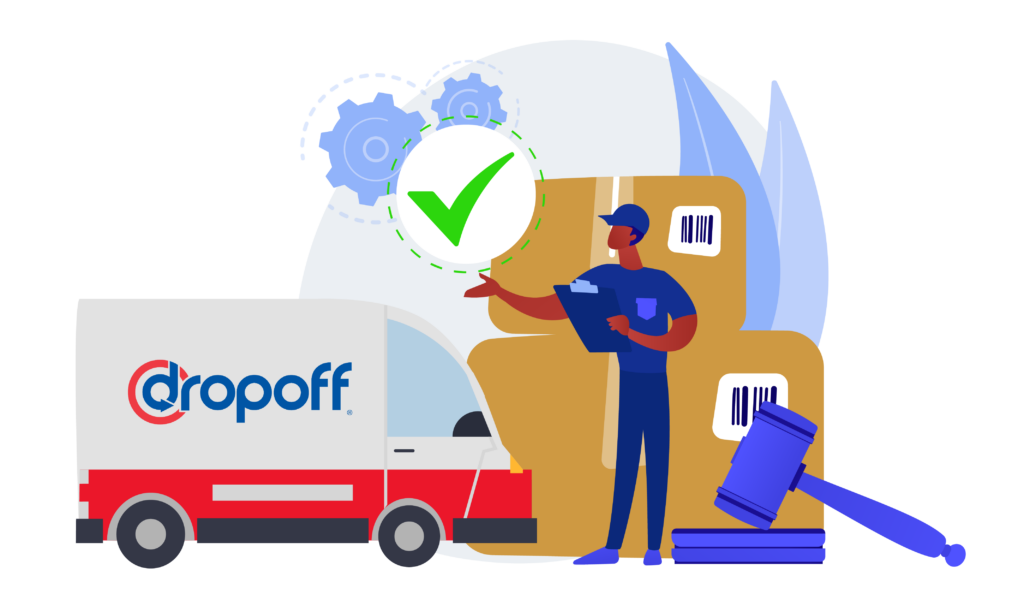
What are the benefits of an efficient middle-mile delivery system?
The significance of a successful middle-mile delivery system resides in its function as a structural underpinning, just like a strong highway network. While last-mile delivery focuses on how products reach their final destinations, the middle-mile guarantees the efficiency and safety of the goods.
Here are some of the advantages of an efficient and effective middle mile logistics system:
1. Mitigating Port Congestion
Especially over the holidays, truck and container gridlock in ports has become a common news story around the world. While there are numerous reasons why these kinds of inconveniences happen, such as port emergencies, shifting transportation guidelines, and more, at times, inefficient middle mile management is the major cause.
An effective middle-mile delivery strategy, which streamlines the efficient transportation of goods, can help businesses avoid port bottlenecks. Dispatching the goods to their fulfillment centers promptly reduces the likelihood of port congestion, leading to faster delivery time.
It’s also important to note that small and midsize enterprise (SME) enterprises may suffer from severe port congestion. Aside from shipment delays, port congestion results in spoilage which can significantly affect inventory costs. Saying that port congestion can lead to an SME’s bankruptcy isn’t an overstatement.
2. Increasing Cost Effectiveness
A strategic middle-mile delivery system is cost-effective for all types of businesses. It enables businesses to lower operating expenses for commodities handling, transportation, and warehousing.
For instance, instead of renting a large warehouse, which businesses have to supply with air conditioning, manpower, and other operational units, they can easily dispatch products to their respective fulfillment centers. This process guarantees prompt delivery, which raises customer satisfaction while concurrently lowering overhead expenses.
3. Scheduling and Route Optimization for Transportation
Delivery inside the middle mile improves the coordination of transportation, including the development of efficient timetables and routes. This ensures that resources are used most effectively, which lowers the cost of labor, fuel, and other transportation-related costs.
As mentioned a while ago, sustainability is now an integral part of businesses. Reduced transportation-related expenditures also minimize the carbon footprint of the entire supply chain. This is crucial for US logistics providers since many states are now enforcing anti-idling laws for long-haul vehicles.
An efficient middle-mile delivery system doesn’t just make an entire logistics operation customer-centric, but it also makes it environmentally friendly.
4. Accelerating Delivery Speed
An effective middle-mile delivery system increases delivery speed by streamlining the movement of items between warehouses and distribution locations.
A streamlined logistics procedure eliminates pointless holdups, cuts down on travel time, and speeds up handoffs to later supply chain stages. Coordinated routing, real-time tracking, and minimal handling propel goods swiftly through the middle mile stage, enhancing overall delivery speed.
5. Increasing Flexibility in Supply Chains
Customers and organizations may now see more of the complete supply chain thanks to middle mile deliveries.
A responsive and agile supply chain is facilitated by precise insights about shipment locations, expected arrival times, and potential bottlenecks. This visibility, marked by real-time tracking and monitoring capabilities, extends throughout the journey from distribution centers to warehouses.
Companies can promptly identify potential delays and hasten corrections thanks to the transparency in logistics. Both client satisfaction and overall operational effectiveness are enhanced by the greater visibility. The delivery process’ openness also promotes customer confidence, which improves client relationships.
Amazon Middle Mile System: An Efficient Logistics Case
Amazon is now considered one of the top retail companies worldwide, reporting a total net sales revenue of $514 billion in 2022. With this figure alone, it’s unsurprising that Amazon has one of the market’s most efficient middle-mile delivery systems today.
The Amazon Transportation Services’ Middle Mile team is one of the greatest benchmarks for supply chain management. A very effective logistics process was developed and put into place by Amazon, consisting of trustworthy delivery points, integrated fulfillment, efficient sortation centers, and optimum routing solutions.
Amazon increased the effectiveness of a traditional middle-mile shipping process through complex technology algorithms and operational data analysis. The achievement of Amazon’s challenging delivery objectives, such as one-day and two-day deliveries for Prime users, as well as one-hour delivery windows for services like Prime Now, has been greatly aided by this strategy. The group was awarded the prestigious INFORMS Prize in 2021 in recognition of their outstanding application of operations research and analytics to their decision-making processes. This work highlighted the ground-breaking potential of successful middle-mile delivery to improve supply chain efficiency.
Here’s the good news: Amazon’s middle mile technological solutions and data research are now available to businesses worldwide. Numerous B2B companies now offer software and solutions that can avert bottlenecks throughout an entire supply chain. In fact, a CAGR of more than 3% is predicted for the high-tech logistics market this year, with a growing focus on flexible, secure, and economical transportation solutions.
What are the business cases not suitable for middle mile transportation?
Just like any business operation, there is no one-size-fits-all regarding logistics. Here are some business cases not suitable for implementing middle-mile delivery:
Local Companies
Point-to-point delivery rather than a whole shipping process can be more advantageous for local enterprises serving communities. Direct lines with no middle mile offer greater efficiency, lower operating costs, and even better consumer involvement.
Companies that Sell Perishable Goods
For perishable items, which must be delivered to clients rapidly, direct transportation is required. Businesses that sell these products won’t benefit from middle-mile delivery because they’ll need more complicated storage and delivery systems to guarantee the quality of their goods.
Low-Volume Shipments
Businesses with small cargo quantities might not save much money with middle-mile logistics. These businesses can conduct more cost-effective operations in addition to point-to-point delivery by promoting client pick-up from their storefronts.

How to select the best middle-mile delivery service provider?
Finding the best middle-mile delivery service provider can be challenging, especially considering all the available options in the market today. To help you with this, we’ve come up with a list of factors business owners should consider in a middle-mile delivery service provider:
Network Reach
The physical network a provider employs to connect several distribution hubs, warehouses, and transportation routes. The broader and more strategically interconnected a provider’s network is, the more effectively it can manage and optimize the flow of goods through the middle mile. Transportation can be made more effective and timely by a provider with a wide network spanning important distribution centers, lowering the possibility of delays and bottlenecks. A large network also offers more routing options, allowing for fast alterations to tackle unforeseen problems.
Integration of Technology
Technology integration is crucial when assessing middle-mile delivery service providers, as Amazon’s middle-mile delivery has shown. Ensuring that the infrastructure they now have is equipped with cutting-edge tracking and monitoring devices that permit real-time monitoring of the transportation process is essential. This not only helps companies monitor the status of their shipments, but it also offers valuable information for assessing the effectiveness of their supply chain.
Aside from that, getting real-time updates on the whereabouts of shipments, the expected delivery dates, and any potential disruptions improves your capacity to make sensible operational decisions and act quickly in the event of a change in the situation. Based on your own logistics data, this offers a more thorough delivery process.
Scalability
When choosing a middle-mile delivery service provider, scalability is an important factor to take into account. Your logistical needs should change as your firm expands. Partnering with a logistics company that can scale its services to accommodate your changing requirements is essential. A provider capable of seamlessly adapting to increased shipment volumes, new delivery routes, and expanding geographic coverage can save you the hassle of searching for a new provider every time you experience growth. Your logistical operations will stay reliable and effective as your firm grows if you choose a vendor with experience helping organizations through various growth stages.
Performance Metrics and Service Level Agreements
Lastly, business owners must know Service Level Agreements (SLAs) and Performance Metrics for middle mile delivery services. This documentation is essential in holding your chosen provider accountable for their service quality.
A well-defined SLA should outline expectations regarding delivery times, handling of goods, responsiveness to issues, and other critical aspects. Additionally, it should establish a structure for resolving possible conflicts and make sure that both sides are on the same page.
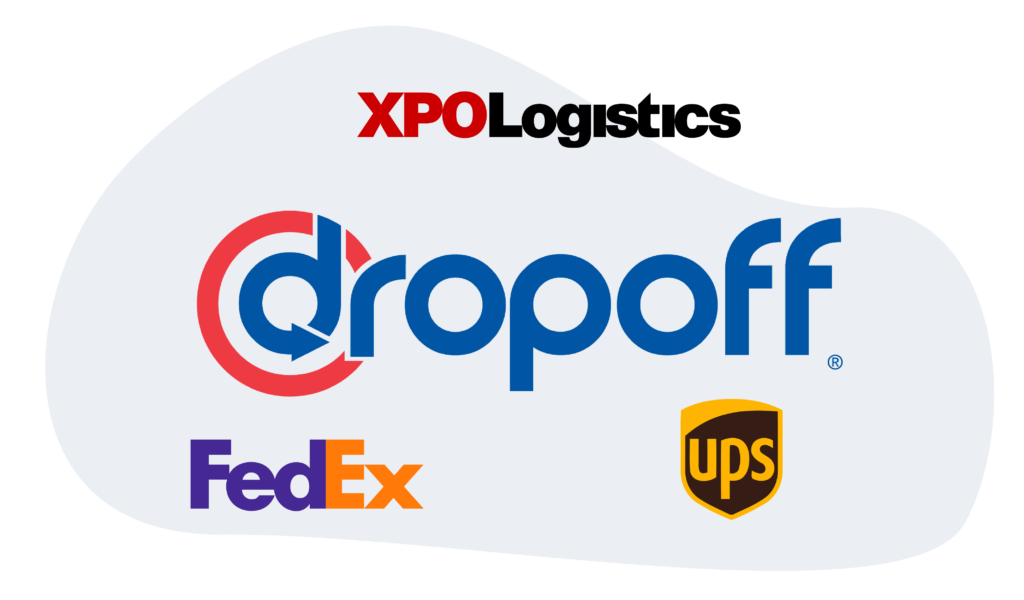
What are the leading middle-mile logistics companies in the market today?
To further guide you in selecting the middle-mile delivery service providers for your business, here are the top companies offering the said service:
Dropoff
Dropoff is a reputable logistics services company with an established track record in a range of delivery techniques. Despite their size, small and medium-sized businesses can make use of Dropoff’s enterprise-level logistics services and have a dependable delivery system. Through their technical platform, they also offer real-time tracking, electronic order placement, and delivery performance insights.
A variety of delivery requirements are met by Dropoff’s extensive service offering, which includes Fixed Route, Overnight/Next-Day, Express/Urgent, STAT, On-Demand, Long-Haul, and Scheduled Delivery. Their influence spans several industries, including retail, business, and healthcare, demonstrating dependability and adaptability. Their consistent inclusion on the Inc. 5000 list attests to their exceptional growth and status as a leading player in the middle-mile delivery landscape.
UPS
UPS Freight provides a full middle-mile delivery solution with its broad network and integration of cutting-edge technologies. In spite of this, it’s crucial to keep in mind that using UPS has a number of disadvantages, like having a single network and charging more for weekend delivery.
FedEx
Operations research and cutting-edge analytics are used by FedEx Freight in its middle-mile delivery services. The business provides the best routing solutions to meet various supply chain needs. However, remember that FedEx services may be relatively more costly than other providers because of their household name.
XPO Logistics
The extensive fleet of long-haul and freight vehicles that XPO Logistics maintains enables them to meet a variety of delivery requirements. Despite this, it’s essential to know that numerous partners often claim that XPO should improve their backend support.
Final Thought
With the continuous popularity of online shipping and contract manufacturing, the role of a streamlined middle-mile delivery system has become paramount for most businesses. The process acts as the framework, maximizing the flow of goods to provide a smooth, efficient, and cost-effective supply chain. Whether it does so by reducing port congestion difficulties, increasing cost efficiency, or enabling inventory management, a well-implemented middle-mile delivery system promotes overall operational success across industries.
Dropoff stands out as one of the most promising middle-mile logistics companies in this intricate logistical puzzle, especially for SMEs. Dropoff responds to the industry’s needs for cutting-edge technology, dependability, and expertise with a distinguished track record across a range of delivery methods. Their technological platform gives companies the ability to keep an eye on deliveries in real-time, ensuring a smooth shipping process. Dropoff helps businesses respond quickly to consumer requests by streamlining the delivery experience with their intelligent logistics platform, qualified drivers, and proactive customer care.
FAQs
Middle mile delivery refers to transporting goods and products from ports to warehouses. It acts as the bridge first and last mile delivery, connecting the source manufacturer location and the customers.
Just like other middle mile delivery, Amazon’s middle mile logistics covers the shipment of products from ports to fulfillment centers. What makes Amazon’s middle mile services is that they have strategically utilized the process to create an efficient delivery routing, allowing them to offer one-day or two-day delivery services.
Middle mile delivery allows businesses to cut overhead costs such as maintenance of warehouses, management of large inventory, and optimization of transportation routes. Aside from this, it also ensures the safety of products while maintaining a timely last mile delivery.

